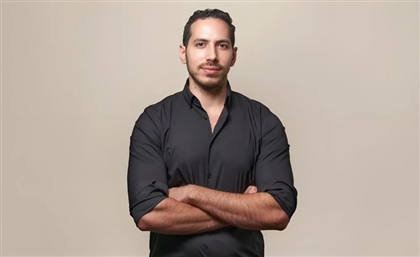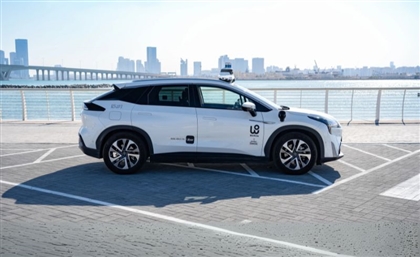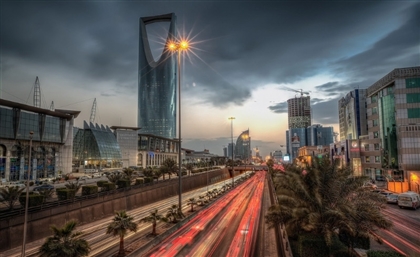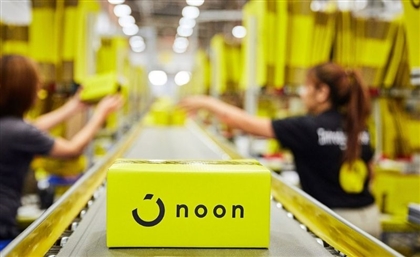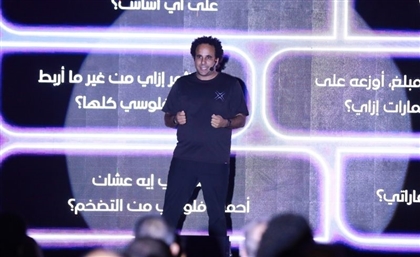How Egyptian Startup Dots is Setting Off to Change Out-Of-Home Advertising in the Region
Car-sharing riders spend most of their time looking at their mobile screens in Cairo. With the support of UK-based Digis2, this Egyptian startup aims to capitalise on that.

Sami Ismail, an Uber driver, was picking up a 13-year-old rider from Obour City on a Monday afternoon before he gets the most memorable feedback he got from a customer during his time as a driver. “That is so cool! I was worried about my long commute to Rehab City, but now it would make it more entertaining than I expected it to be,” seated in the back, the boy tells Ismail, while he taps on the screen of Dots’ removable tablet, Airbox.
According to the World Bank, at least $8 billion are lost to traffic per year. In fact, by 2030 this number will inflate to $18 billion. According to Numbeo, a commuter in Egypt's bustling Cairo spends an average time of 50 minutes per day. This team behind Dots' Airbox thought, "Why don't people make money on this time spent just like it is on airplanes?" With that question in mind, these entrepreneurs want to turn things around, making money out of Cairo's infamous traffic instead of losing it.
According to Uber's figures, in 2017 alone, 150,000 job opportunities were created through the Uber technology; 40 percent of whom were previously unemployed drivers, making Uber one of the biggest economic contributors in Egypt.
Uber has been working continuously to provide reliable, safe and convenient transportation method to all Egyptians, since it’s launch in Egypt 4 million riders used Uber.

A commuter in Egypt's bustling Cairo spends an average time of 50 minutes per day.
"We are currently testing in-car entertainment, and it is going great," General Manager of Uber Egypt Abdellatif Waked tells Startup Scene ME. "Using additional technology inside a car - using tablets - gives drivers the chance to supplement their income even more. It is important to continue developing user experiences, with the use of advanced technology."
We have made several partnerships to launch the testing phase, of which an important one is Airbox.
The 10-inch screen of Airbox, piloted in 50 Uber cars for nearly two months, is the first product of Dots, a company providing tailored digital out-of-home solutions. Founded in 2016, Dots has been incubated and supported by the UK-based Digis2, which stands for digital innovative solutions and services. “Digis2 is an extraordinary technology service provider established in UK and has an office in Egypt and they were awarded to implement multiple value added services and IT projects with WE as well as Vodafone Egypt,” Dots' Co-Founder and CEO Ahmed Zein tells Startup Scene ME.
We sit with the gentlemen behind Uber's new tablet as they let us in on their business strategy. "Our business model so far is based on partnerships," continues Zein. "We are partnering with Chinese and Egyptian retailers for the tablets, such as SICO, and a bunch of platforms for content." When one takes an Uber, whether they're seated next to the driver or at the back, they'll find the tablet fashioning a carousel-format home page showcasing the content coupled with relevant and subtle ads. "We are not bombarding the rider with ads during the trip or making the ad static on the screen," elaborates Ahmed Mohsen the third co-founder, responsible for the design and graphical user interface; adding that the ad plays within the rider's journey through the content. Dots takes advantage of the carousel which plays the role of attracting the riders to interact and flip through the ads during the navigation.
According to a study by Nielsen, published in 2015, digital billboards generate high recall for ads and positive consumer attitudes. In a survey of those who traveled roadways with digital billboards, 75 percent of respondents recalled seeing a digital billboard in the past month and 60 percent noticed one in the past week. Imagine what effect an on-board mobile digital billboard would have on Uber riders.
"Airbox is a movable tablet; it could move from the front seat to the back seat to ensure maximum viewership," highlights Zein. According to the CEO, fixating the tablet on the backseat would only consider riders who prefer to sit at the backseat, forgetting about the ones who prefer sitting in the front. The content categories flow from health and lifestyle, to city life and suggestions of what to do in the busy capital. The team has also brought in a tab titled “Explore Egypt” to support tourism. To their surprise, this tab has been the most clicked so far – even by Egyptian riders.
Moreover, there are two types of content in Airbox; content based on partnerships, and Dots' exclusive content written by their own team of writers who do their research and write about the topics relevant to the audience likely to use Uber, belonging to both A and B socioeconomic classes. "Matching the on-going events with the content placed on Airbox; like Ramadan, World Cup and so on, we are opening the door to the concept of content marketing not mandatory to advertise for products or goods only on Airbox, for those who are looking for exposure to elite type of users," adds Zein.

The team just arrived from Barcelona's Mobile World Congress (MWC) which ended on the first of March 2018, where they represented Dots and exchanged expertise.
"Airbox is backed with with a powerful Analytical Platform which is analyzing every single click done by the rider during his session on Airbox and this is helping us to see what content do riders really like and what content is not appealing so this is helping us to enhance our content and even out user interface experience," Co-Founder and Director of Sales and Business Development Ibrahim Shoukry tells Startup Scene ME. With an average of 13 clicks per riding session, the Airbox's viewership could consume most of the time spent in an Uber ride. "Advertisers have full access to the backend; they would have a username and password with which they could directly upload, edit, or remove their flyers," he adds. So far, Airbox has sealed deals with advertisers like TA Telecom, Baheya Foundation, Souq.com, as well as Tabibi for Medical Services.
Dots went through many phases of obstacles to be able to pull out this product. “It was difficult to create the best tablet experience for riders and at the same time secure maximum viewership duration to assure Content Creators or Advertisers that their Content/Ad is seen; the User Interface (UI) design phase was not easy either,” elaborates Mohsen.
The team just arrived from Barcelona's Mobile World Congress (MWC) which ended on the first of March 2018, where they represented Dots and exchanged expertise. Zein and Shoukry were colleagues at Etisalat, where the CEO used to work as a Service Creation and Value added services manager and the director of sales and business development worked as a content and marketing Expert. Meanwhile, the third co-founder, Mohsen, comes from an architectural background and runs a digital design firm.
"We have no problems in tablets expansion in more cars and cities," says Zein. "But our main focus for now is to create and unique and unforgettable experience for Uber riders using Airbox. Moreover, we are also keen to enhance the tablet experience by introducing more interactive features to the riders."
Main Image courtesy of DOTS.
The content of this article was sponsored.
- Previous Article How Can We Make AI Conscious? We Ask the Engineers of the Future
- Next Article 8 Wonder Women Entrepreneurs Crossing Milestones in Jordan
Trending This Month
-
Dec 28, 2025



